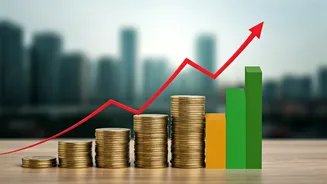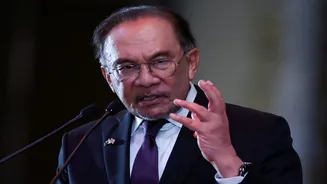IMF's Upward Revision
The IMF's decision to raise India's growth forecast to 6.6% signifies a noteworthy shift in its economic outlook. This adjustment reflects the institution's
confidence in India's economic resilience and its ability to navigate global economic uncertainties. The IMF's forecasts are based on intricate analyses of numerous economic indicators, including industrial output, investment trends, and consumer spending. The revised forecast suggests a stronger-than-anticipated performance by the Indian economy, surpassing initial predictions. Several factors have been analyzed to contribute to this positive reevaluation, including governmental reforms, increased investment flows, and advancements in various sectors. The IMF's assessment is crucial as it provides insights into the global financial community and has an impact on investment decisions and policy adjustments.
Factors Driving Growth
Several crucial factors underpin the IMF's optimistic growth projection for India. The Indian government's proactive economic reforms have played a key role in boosting investment and business confidence. These reforms often involve improvements in bureaucratic procedures, infrastructure development, and initiatives to make doing business easier. Furthermore, there has been an increase in investment flows, both foreign and domestic, which has facilitated economic growth. Investment in vital sectors such as infrastructure, manufacturing, and technology has been significant. The growth of India's digital economy has also been another factor, propelling the expansion of the services sector. The widespread adoption of digital technologies has enhanced efficiency, boosted consumer demand, and fueled innovation across various industries. In conclusion, these combined aspects highlight India's economic progress and prospects.
Potential Challenges Ahead
While the IMF's projection brings about optimism, it also highlights potential challenges India must address to sustain its economic growth. One of these challenges is the impact of external economic pressures, such as protectionist tariffs and global trade uncertainties. These factors may impact India's exports and hinder its economic development. Addressing infrastructural gaps is also vital for supporting continuous economic growth. Investing in infrastructure, like transportation networks, energy grids, and communication systems, is vital to facilitate trade, attract investment, and improve efficiency. Furthermore, there is a need to monitor and manage inflationary pressures. Rising inflation could erode purchasing power, impact consumer spending, and create economic instability. Consequently, India must carefully consider and mitigate these challenges to ensure sustainable and long-term economic progress.
Opportunities and Future Outlook
The IMF's revised growth forecast presents many opportunities for India to further consolidate its economic growth. India has the chance to capitalize on its demographic dividend. With a growing young workforce, India can foster its economic expansion. India can also leverage the burgeoning digital economy, encouraging digital adoption, e-commerce, and fintech innovation, which can revolutionize different sectors and drive financial inclusion. The forecast also projects that India will maintain its status as one of the fastest-growing major economies. This is because of its strong fundamentals and reform-oriented policies. The Indian government's dedication to economic reforms, investment in infrastructure, and digital technologies suggests a promising economic outlook. Continuous monitoring, adaptable policies, and strategic investments will likely play an essential role in shaping India's growth trajectory.











